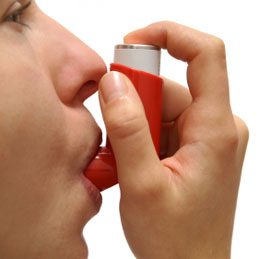
breathing
Try these techniques to help improve your lung capacity.

1. Do You Have Sleep Apnea?
Ask your partner if you snore at night. If the answer is yes, make an appointment with your GP and ask for a referral to a sleep centre to get checked for sleep apnea. This condition, in which someone stops breathing dozens or even hundreds of times during the night, can actually damage the lungs nearly as much as smoking. Fortunately, it’s treatable.

2. Walk Up and Down the Stairs Daily
The kind of exercise that makes your heart beat faster, such as climbing stairs, riding a bike or walking briskly, is very important for keeping your heart and lungs in good shape. For instance, studies find that walking for about 15 minutes at a time, three to four times a day, improved breathing in people with the lung disease emphysema.

3. Get More Omega-3s
Most airway problems, including asthma, are related to inflammation. Omega-3 fatty acids reduce inflammation.

4. Change Your Breathing Habits
Breathe from your abdomen for at least 5 minutes every day. This kind of breathing, called diaphragmatic breathing, involves training and strengthening your diaphragm so that it requires less effort to take in each breath. To do it, inhale deeply through your nose, filling your lungs from the bottom up. If you’re doing it right, your stomach will push out. Exhale and repeat.

5. Breathing Exercises
To help your chest to expand and boost your lung capacity, lie on your back with your knees bent and your feet flat on the floor. Place your hands behind your head and bring your elbows together so they’re nearly touching. As you inhale, let your elbows drop to the sides slowly so your arms are flat on the floor when your lungs are full. As you exhale, raise your elbows again.

6. Eat More Tomatoes
Make spaghetti sauce tonight, tomato and basil salad tomorrow night and roasted tomatoes over the weekend. Why? Because British researchers found that people who ate tomatoes three times a week had improved lung function and experienced less wheeziness and fewer asthma-like symptoms.

7. Check Your Household Cleaners
Some products, such as oven cleaner, can be toxic if inhaled. If the instructions say to open a window or use in a well-ventilated space, make sure you do so. And wear a face mask when working around toxic dust or fumes. Even simple household tasks such as sanding paint could send damaging fragments into your lungs.

8. Try Abdominal Crunches
Work in 10 to 20 crunches a day. Your abdominal and chest muscles allow you to suck air in and out. Strengthen them, as well as practicing your deep breathing, to get the breathing power of a professional opera singer (or at least close).

9. Take Your Asthma Medication
There’s some good evidence that people with asthma eventually develop chronic obstructive pulmonary disease, or COPD, a lung disease that strikes people aged 65 and older. There’s also evidence that keeping your asthma under control can prevent the disease from developing.

10. Eat Plenty of Fruits and Vegetables
Get at least seven servings of fruit and vegetables a day. A 1998 study found that the high amounts of antioxidants they contain, including vitamin C, vitamin E, selenium and beta-carotene, meant better lung function – even in smokers.